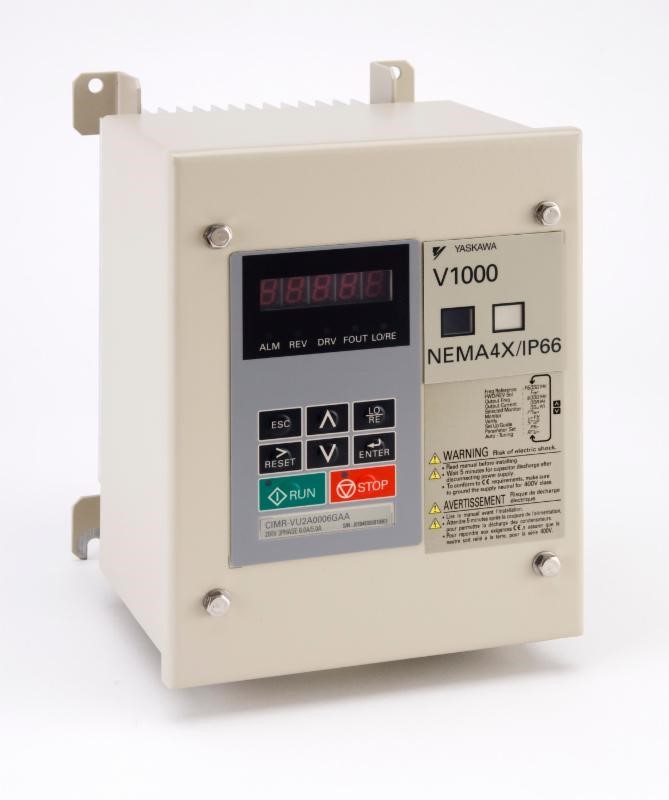
Precision grinding results in the material removal of metals of all kinds and crystalline materials of all kinds, i.e. glass, quartz, ceramic, ferrite, abrasives, stone and other materials that cannot be machined with conventional cutting tools. These materials are too hard, abrasive, and require dimensions, tolerances and surface finishes otherwise not achieved easily or cost effectively with any other method.
To accomplish this in a profitable manner, time is of the essence, friction and heat become critical. Cooling/lubricating systems are required. Wheel balancing systems, filtration systems, material handling, inspection and chucking systems are used to make the end result competitive and profitable.
Variable spindle speed controls are not used enough when grinding. In the ‘60s the first AC hertz variable spindle speed control became available. Prior to AC inverters, DC motor and variable-speed controls were available as were multiple pulley diameters and Veriac transmissions.
Changing sfm and rpm were considered an “art form.” Even today, it is still not understood. To overcome friction, heat, and get to dimensions, tighter tolerances and lower surface finishes the action of the wheel needs to be altered.
The sfm, table feed, cross feed, down feed all have to be changed. It doesn’t stop there. Balance, coolants, pumps, nozzles, filtration, chucking and material handling all need to be improved to accomplish increased productivity.
Grinding wheels all have many grit sizes, hardnesses, bonds and different porosities. Select one combination for the specific application. Then, using a variable spindle speed control designed for precision grinding, learn how to improve the results.
DIT variable spindle speed controls read out in volts, amperes, watts, cycles and rpm. With this information decisions and choices can be determined and made to improve precision grinding results.
Does the wheel grind too hard and hot? Slow the rpm down a little at a time. Does the wheel break down or doesn’t hold its size or shape? Speed the spindle up a few revolutions. To get a lower rms or AA surface finish, increase a few revolutions. Changes can be made instead of changing wheels, using a different wheel diameter or redressing the wheel.
Reduce the “art” and make your precision grinding more of a science.
Related Glossary Terms
- abrasive
abrasive
Substance used for grinding, honing, lapping, superfinishing and polishing. Examples include garnet, emery, corundum, silicon carbide, cubic boron nitride and diamond in various grit sizes.
- arithmetic average ( AA)
arithmetic average ( AA)
The mathematical expression denoting one of several parameters that describe surface texture (same as average roughness Ra). Average roughness is the arithmetic average height deviation of the measured surface profile from the profile centerline. See surface texture.
- feed
feed
Rate of change of position of the tool as a whole, relative to the workpiece while cutting.
- ferrite
ferrite
Solid solution of one or more elements in body-centered cubic iron. Unless otherwise designated, for instance, as chromium ferrite, the solute is generally assumed to be carbon. On an equilibrium diagram, there are two ferrite regions separated by an austenite area. The lower area is alpha ferrite and the upper area is delta ferrite. If there is no designation, alpha ferrite is assumed. Not more than 0.04 percent carbon can be dissolved in alpha iron. Ferrite is stable below 1,670º F (910º C); it is soft, highly ductile, and magnetic. Ferrite loses its magnetic property above 1,414º F (768º C).
- grinding
grinding
Machining operation in which material is removed from the workpiece by a powered abrasive wheel, stone, belt, paste, sheet, compound, slurry, etc. Takes various forms: surface grinding (creates flat and/or squared surfaces); cylindrical grinding (for external cylindrical and tapered shapes, fillets, undercuts, etc.); centerless grinding; chamfering; thread and form grinding; tool and cutter grinding; offhand grinding; lapping and polishing (grinding with extremely fine grits to create ultrasmooth surfaces); honing; and disc grinding.
